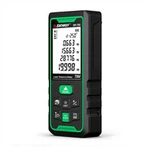Give an example to illustrate the difference between a switching power supply and a normal power supply
Switching power supply technology is continually evolving along with power electronics technology's progress and innovation. Due to their compact size, light weight, and great efficiency, switching power supplies are currently utilized in practically all electronic equipment. Given the current electronic information industry's rapid development, it is an essential power supply technique.
Modern power electronic technology is used by switching power supplies to regulate the time ratio of switching on and off in order to maintain a constant output voltage. The main components of a switching power supply are a MOSFET and a PWM control IC. The switching power supply and the linear power supply are related. The switching tube is used to control the on-off of the current to create a high-frequency pulse current after its input terminal directly rectifies the alternating current into direct current while operating under the influence of the high-frequency oscillating circuit. An inductor is used to provide a steady low-voltage direct current.
Typically, a MOSFET plus a pulse width modulation control IC make up a switching power supply. Switching power supplies have become increasingly commonplace with the advancement and innovation of power electronics technology due to its small size, light weight, and high efficiency, which demonstrates their significance.
Switching power supplies can be broadly categorized into three groups based on how switching devices are connected in the circuit: series switching power supplies, parallel switching power supplies, and transformer switching power supplies. The transformer-type switching power supply can be further broken down into push-pull, half-bridge, full-bridge, and other variations. It can be split into four categories: forward type, flyback type, single excitation type, and double excitation type, depending on how the transformer is excited and the phase of the output voltage.
So what is the difference between switching power supply and ordinary power supply?
A linear power supply, or a power supply in which the adjustment tube operates in a linear condition, is what is typically meant by the term "regular power supply." In contrast, the switching tube operates in two states of on and off in a switching power supply: on, where the resistance is minimal, and off, where the resistance is considerable. A relatively new form of power supply called a switching power supply has the benefits of high efficiency, light weight, step-up and step-down capability, and huge output power. But because the circuit operates in a switching mode, the noise is quite significant.
By way of illustration, the step-down switching power supply's circuit is made up of switches, freewheeling diodes, energy storage inductors, and filter capacitors. When the switch is closed, the power supply sends electricity through the switch and the inductor to the load while also storing some of the electricity in the capacitor and inductor. The self-inductance of the inductance causes the current to build slowly after the switch is activated, preventing the output from quickly reaching the power supply voltage value.The current in the circuit will continue to flow from left to right even after the switch is switched off for a predetermined amount of time because of the inductor's self-inductance. This current circulates through the load, emerges from the ground wire, travels to the anode of the freewheeling diode, flows through the diode, and then loops back around to the left end of the inductor. The switch's closing and opening times can be adjusted, which controls the output voltage. The goal of voltage regulation is accomplished if the on and off time is managed by monitoring the output voltage to maintain the output voltage constant.
The voltage adjustment tube used in both the switching power supply and the common power supply uses the feedback principle to stabilize the voltage. The switching power supply adjusts using the switching tube, whereas the conventional power supply typically adjusts using the linear amplification region of the triode. In contrast, the switching power supply uses less energy, has a wider application range for AC voltage, and produces DC with less ripple. Switching pulse interference is a drawback.
The upper bridge and lower bridge switching tubes are turned on one at a time as the basic operating concept of a half-bridge switching power supply. The upper bridge's switching tube is where the current enters first. Electric energy is accumulated in the inductance coil using its storage capability, and the higher bridge's switch is finally shut off. When the lower bridge's switching tube is activated, the inductance coil and capacitor will continue to provide electricity to the outside world.It is known as a switching power supply because the two switch tubes must be turned on and off sequentially. After turning off the switch tube of the lower bridge, open the top bridge to allow electricity to flow through. Different is the linear power supply. The higher water pipe constantly discharges water because there isn't a switch involved. Water will leak out if there is too much of it. In some linear power supply adjustment tubes, we frequently observe this. All of the limitless electrical energy is transformed into thermal energy.From this perspective, the linear power supply's conversion efficiency is extremely low, and when the heat is high, the component life will inevitably shorten and have an impact on the ultimate usage effect.
However, the key distinction between its switching power supply and regular power supply is how it operates. The linear power supply's power adjustment tube operates continuously in the amplification area and is always in operation. Huge power adjustment tubes are needed and a large radiator is built as a result of the significant power loss on the adjustment tube, which results in significant heat generation and low efficiency, often between 40% and 60%. The linear power supply's functioning principle necessitates the use of a voltage device to switch from high voltage to low voltage. It usually consists of a transformer, while there are alternatives like the KX power supply that rectifies the signal and outputs a DC voltage.In this method, the volume is big, heavy, inefficient, and generates a lot of heat, but it also has benefits like tiny ripple, good adjustment rate, little outside interference, and it works with analog circuits or other amplifiers. The switching power supply's power device operates in the switching condition. It is for the transformer and energy storage that the energy is temporarily stored through the inductance coil when the voltage is adjusted, so there is little loss, high efficiency, and less need for heat dissipation.Higher standards apply to inductance, which must be constructed of low-loss, high-permeability materials. Its transformer has a word-sized size. Efficiency ranges from 80% to 98% overall. Although the switching power supply is tiny and has a high efficiency, it is less efficient than linear power supplies in terms of ripple, voltage, and current adjustment rate.






